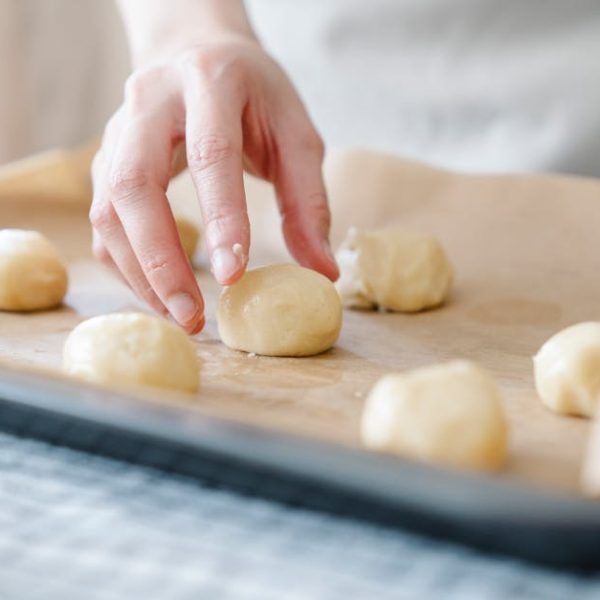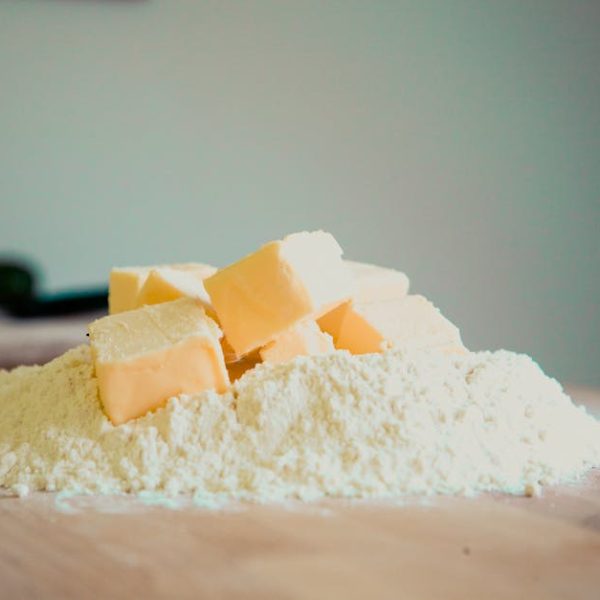Let’s face it: there’s nothing quite like the mouthwatering satisfaction of a slice of freshly-baked bread. But amidst our busy lives, preserving this freshness can be challenging. Fortunately, freezing bread properly can prove to be just the ticket to maintaining its delectable taste and soft texture. Despite seeming straightforward, freezing bread involves a science that, when mastered, can make all the difference. This article presents a detailed guide – filled with tips, best practices, and insights – for keeping your frozen bread fresh every time.
Understanding the Importance of Proper Freezing
The freezing process plays a pivotal role in bread preservation. When you expose bread to room temperature, it undergoes a process called retrogradation, where the starch molecules within it realign, causing the bread to become stale. Freezing stalls retrogradation, hence protecting the integrity of the bread. This simple, yet vital step ensures that you relish every bite – just as though it was fresh out of the oven. Timely freezing is also key; waiting too long before freezing can contribute to staleness, even after freezing.
While freezing may sound foolproof, mishandling can compromise the quality of your bread. Improper freezing can lead to freezer burn (more on this later), a change in texture, and a loss of flavor. As Benjamin Franklin once said, “An ounce of prevention is worth a pound of cure.” By freezing your bread properly, you’re preserving its unique essence, saving your future self from the disappointment of biting into a stale slice.
Choosing the Right Bread for Freezing
Not all breads were created equal, at least, not when it comes to freezing! The type of bread you choose can significantly affect its response to freezing and subsequent thawing. Some breads, like dense whole grain loaves and rye bread, freeze remarkably well. Others, like delicate pastries and croissants, may not fare as well in the freezer due to their high butter content and flaky texture.
Here’s a quick overview of different bread types and their freezing suitability:
- Whole grain: Yes, great for freezing.
- Rye bread: Yes, freezes well.
- White bread: Yes, but may dry out faster.
- Gluten-free bread: Yes, but best consumed promptly after thawing.
- Pastries and croissants: Not ideal, as they may lose their delicate, flaky texture.
Understanding the differences between bread types can guide you in making better choices about which bread to freeze, helping optimize your bread-freezing endeavors for the best results.
How to Properly Prepare Bread for Freezing
Great preparation is the starting point of effective freezing. Bread needs to be completely cooled before freezing to prevent condensation, which can lead to sogginess or even mold. Slicing your bread prior to freezing can also be a game-changer, allowing you to easily grab the exact number of slices you need without thawing the entire loaf.
When it comes to slicing, there’s no ‘one-size-fits-all’ approach, and thickness can be a personal preference. However, a good rule of thumb is not to slice your bread too thin (it could dry out) or too thick (it may not thaw evenly). Aim for slices about 1/2 to 3/4 of an inch thick – a size that suits most sandwiches and toasts well.
Effective Use of Packaging and Wrapping Methods
How you wrap your bread before freezing can either make or mar its future freshness. Different packaging options offer varying levels of protection against freezer burn and staleness. From cling wrap and foil to freezer bags, it’s essential to select a packaging method that not only suits your needs but also maximizes bread freshness after freezing.
Here’s a comparison table on different wrapping methods and their benefits:
| Wrap type | Benefits | Drawbacks |
| Cling wrap | Seals well, easy to see through | Not very sturdy against freezer burn |
| Foil | Highly durable and resistant to punctures | Not transparent, meaning you can’t see what s inside without unwrapping |
| Freezer bags | Re-sealable, strong against freezer burn | Can take up more space in the freezer |
For best results, consider double wrapping your bread – first in cling wrap or foil, then placing it in a resealable freezer bag. This provides an extra layer of protection against freezer burn and staleness. Don’t forget to label your package with the type of bread and the date of freezing; this will make your life easier during the thawing process later!
Proper Thawing Techniques to Maintain Freshness
Not all heroes wear capes – and thawing your frozen bread correctly is just as heroic as it gets! The right thawing technique ensures that your once-frozen slice can revive its pre-frozen deliciousness. But remember, swift thawing may cause the bread to lose moisture, resulting in a soggy or dry texture.
To avoid this, the best method is to let your bread thaw gradually at room temperature. If you need to speed up the process, go ahead and use your microwave’s defrost function, but remember to monitor the process closely to avoid overheating your bread.
Pro Tip: To mimic that fresh-out-of-the-oven taste, reheat your thawed bread! Just pop it in the oven for a few minutes at around 350°F, and witness the magic unfolds as your frozen to thawed bread comes alive!
Avoiding Freezer Burn and Its Effects on Bread
The frosty foe of frozen goods, freezer burn, is an unfortunate reality you may encounter during freezing. Freezer burn occurs when air reaches your food, causing dehydration and resulting in those unwelcome grayish-brown spots and a change in flavor.
To prevent freezer burn:
- Ensure your wrap is air-tight for maximum protection.
- Store your bread in the main part of the freezer where the temperature is more stable.
- Minimize the time your freezer door is open to maintain the optimal temperature inside.
Note: While freezer-burned bread may not be visually appealing or as tasty, it’s still safe to eat. However, for the best taste and texture, it’s recommended to cut away the freezer-burned portions before consuming.
Useful Tips for Long-term Storage of Bread in the Freezer
For your bread to sing you the same melodious, fresh taste after weeks – or even months – in the freezer, mindful storage is key. Generally, bread can maintain its quality in the freezer for up to three months. Remember, the goal is to keep it fresh, not just edible.
Here’s a handy checklist for the long-term storage of bread in the freezer:
- Allow bread to cool completely before freezing.
- Slice your loaf before freezing for easier use.
- Double wrap your bread for increased protection against freezer burn.
- Label your bread with the date and type for easy identification.
- Regularly rotate your frozen bread to ensure each loaf is used before it starts to deteriorate.
When organizing your bread in the freezer, remember to make smart use of your available space. Store flat items, like pre-sliced bread, at the bottom, and place bulky items, such as bagels and rolls, on top. With this freezer organization, you’re one step closer to winning at the game of bread preservation!
There you have it – the fine art of preserving the freshness of your bread in the freezer! With these tips, you’re well on your way to enjoying that wonderful fresh-bread experience, bite after delectable bite, on your own schedule. Happy freezing!
Key Takeaway:
- Proper freezing is crucial for maintaining the freshness of bread and preventing it from going stale.
- Not all types of bread freeze well; dense whole grain and rye bread are among the best choices.
- Preparation before freezing, such as full cooling and slicing, and effective use of packaging and wrapping make a significant difference.
- Correct thawing methods are essential not to compromise the taste and texture of the bread.
- Preventing freezer burn and organizing for long-term storage contribute to successful bread preservation in the freezer.
In a world where we value both freshness and convenience, mastering how to keep your frozen bread fresh every time is a handy skill. With these practices, you can enjoy that delicious, fresh-bread taste at your convenience every time. Here’s to a never-ending supply of fresh-tasting, perfectly preserved bread in your freezer!
FAQs
Q: Can I refreeze bread after it has been thawed?
A: Although it is generally not recommended, as it may affect the texture and moisture content of the bread, if necessary, bread can be refrozen once after original thawing.
Q: Should I freeze bread in the store packaging?
A: While store packaging can suffice for short-term freezing, for longer-term storage and better quality, consider repackaging the bread using a method that better protects it, such as double wrapping.
Q: What should I do if my frozen bread develops freezer burn?
A: While not harmful, freezer burn can affect the taste and texture of the bread. You can simply cut off the freezer-burned section before eating the bread.
Q: Are there any health concerns associated with freezing bread?
A: No, freezing bread doesn’t have health risks. It’s a safe and effective way to extend the bread’s shelf life without compromising its nutrients.
Q: How frequently should I rotate my stored bread in the freezer?
A: There’s no set rule for this, but it’s good practice to periodically check and rotate your bread to ensure each loaf is used before it starts to deteriorate, especially if you freeze bread often.
Remember, feel free to share this article and explore more posts for additional useful tips and insights on our website.






